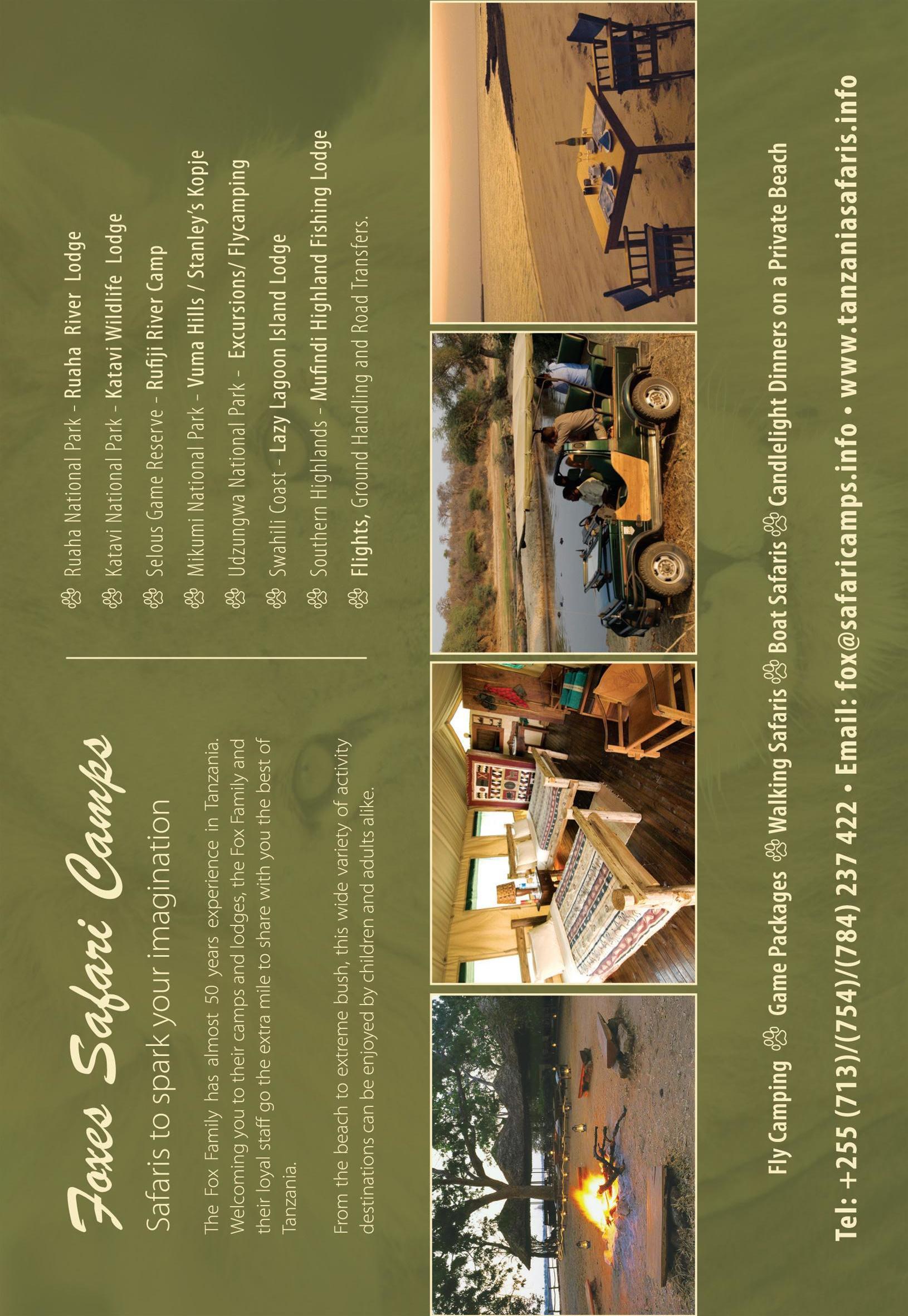
9 minute read
Hot Tips for Perfect Summer Skin
HOT TIPS FOR PERFECT Summer Skin Time to flaunt glowing, healthy skin
Summer means beach days and barbeques, and a time to flaunt glowing, healthy skin. Hemlines are shorter, blouses are sleeveless, and bare feet make their appearance. Make sure you put your best and most gorgeous face and Summer is the time you want sandaled foot forward this summer by using these tips to your skin to look healthy and beautify and protect your radiant skin during the warmer fresh but many people suffering months. from oily skin might end up with a spotty complexion. Increased Sunscreen and hats – Protect your skin against the harsh summer rays by wearing sunscreen with a SPF factor sweat, humidity and application no less than 20. When you go out into the sun, reapply of sunscreen block the pores, your sunscreen regularly and always wear a hat. This will promoting the formation of prevent the formation of bacteria build-up. Ensure clean pigmentation. skin with a balancing cleanser and apply a cleansing or repair mask Feet first – Feet twice a week. require special care in the summer. Keep nails short to enjoy summer sports activities. Exfoliate feet regularly, and don’t lighten up on rich, emollient foot creams, because parts of the feet contain no oil glands. If you visit the beach, take a long walk. No manmade treatment equals the exfoliation power of feet pounding against sand.
Advertisement
Hydrate – Ensure you drink plenty of water during the hot months, especially if you are very active. If you start drinking water once you feel thirsty it means that you are already slightly dehydrated. Always try to carry bottled water around with you.
Lip care – Cold sores are more likely to occur when the UV rays from the sun trigger them. Wear a lip balm with SPF 15 or higher. Chapped lips may be annoying but burned lips can be very painful! Reapply often and even more so when you are outdoors.
Remove hair wisely – Shave, wax, or use your depilatory at least 24 hours before you head into the sun. All three removal methods can leave the skin mildly irritated, making it more susceptible to burning and stinging in the sun.
Moisturize - Excessive heat can dehydrate the skin, so it’s important to keep it moisturized during the summer, even if your skin feels oily. More sebum is a sign that your skin could be dehydrated. It’s tempting to skip moisturizer in the summer because of excess oils on the skin. Use a lotion instead of a creme—it contains more water and less oil.
Picture Courtesy of 7 Floor Media




Nyerere National Park
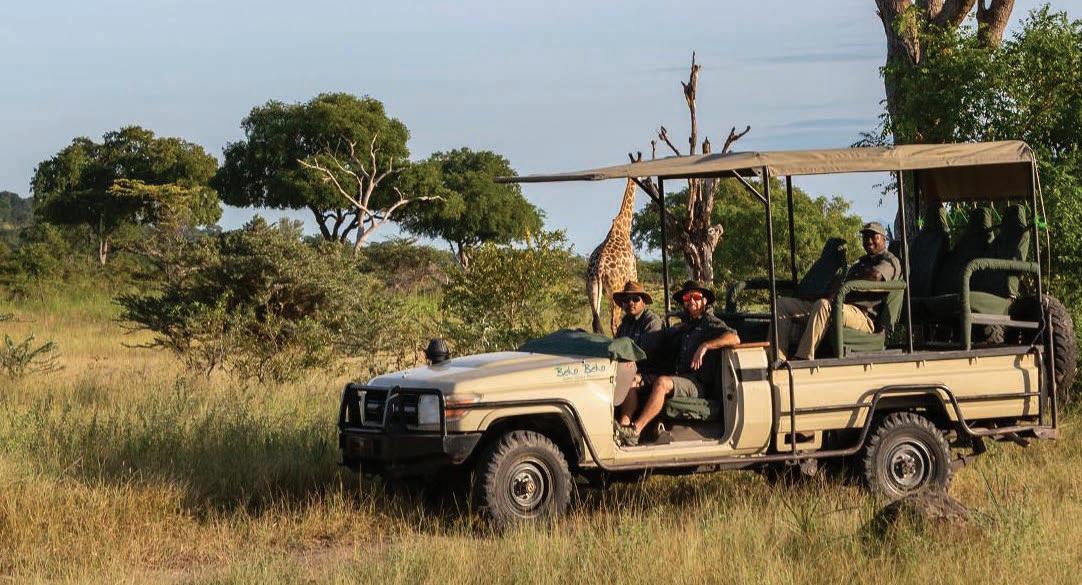

Rufiji River is one of the largest water systems in East Africa. With its associated wetlands, lakes and swamps, it is one of the most outstanding ecological systems in the whole of East Africa.
FACTS
^inje: 50,000sq km (30,893 sq km Nyerere National Park & 19,107 sq km Selous Game Reserve) >ocaƟon: southeast Tanzania ^cenery: Beautiful views of colorful African landscapes, diverse vegetation types, including rocky acacia-clad hills, gallery and ground water forests, swamps and lowland rain forest. &eatures: Forests, rocky hills, mountains, waterfalls, rivers such as Rufiji, Great Ruaha and Kilombero River as well as sand rivers, which are one of the most unique features of the Selous landscape. tildlife Includes: Elephants, buffalo, leopards, African wild dogs , lions, hippo, crocodiles, plus a variety of bird life: fish eagles, African Skimmers, waders, herons, kingfisher and weavers. Antelopes, white bearded wildebeest and giraffes are also commonly seen on the north side of the river.
BIRDING
The mighty Rufiji River is responsible for the huge variety of birds drawn to this area. This enormous river with its everchanging pattern of sandbanks, oxbow lakes, lagoons, islands and channels is a magnet for several rare species of birds. Pretty pink-backed pelicans are oŌen seen here as are great white pelicans. When the water levels lower during the dry season, the fish become consecrated in this shrinking environment and waterfowl are attracted to feast on this easy prey. Egyptian Geese and White-faced Whistling Duck

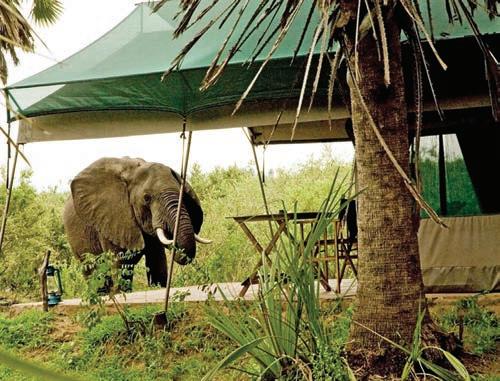
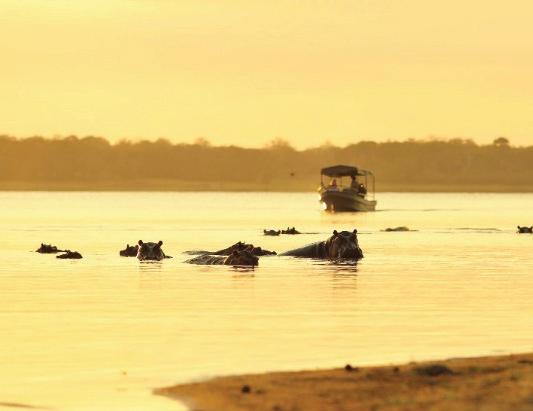
are common at these times. The White-backed ,erron, an elusive the night birds are more prevalent along the river banks. Brown-necked and brown-headed parrots are also commonly seen birds.
THE WILDLIFE
Nyerere National Park, together with Selous contains about one third of all the wild dogs ;oŌen called painted dogsͿ in the world. Their need to roam vast areas and their formidable hunting skills have caused many to be shot by farmers, but here in Nyerere National Park, together with Selous they have boundless woodlands and savannas in which to roam. Over 800,000 mammals, including lions, leopards, cheetahs, elephants, buffalos, zebras, impalas, gnus, hartebeests, waterbucks, giraffes, kudus, warthogs, grysbok, hyenas, jackals, wild dogs, bush babies, baboons, Vervet monkeys and mongooses are also present. And that͛s without mentioning the reserve͛s specialty ʹ an abundance of hippopotamuses and crocodiles.
Along the Rufiji River, an array of grazing antelopes, crocodiles and hippos are commonly seen as well as black and white colobus monkeys in the riverine forests. During the dry season from :une to Kctober, the concentration of animals along the river is astonishing. Linked to the Rufii is Lake Tagalala where waterbuck, reedbuck and bushbuck gather at the water͛s edge. Magnificent sickle-horned sable and curlyhorned greater kudu tend to keep to the longer grass and wooded shrubby areas. In the dry season, an ancient
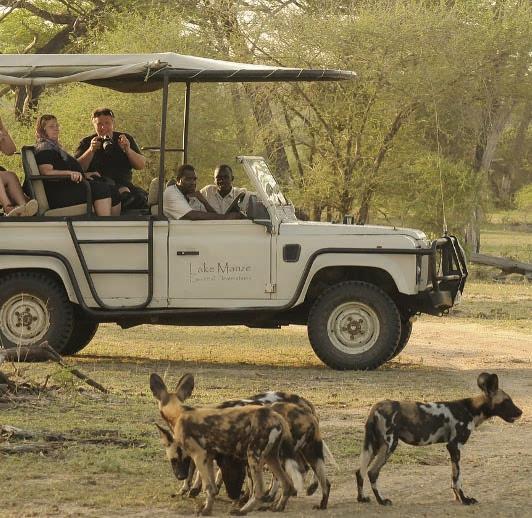
migration of elephants takes place between the Nyerere National Park Ex Selous and Mozambique͛s Niassa Game Reserves. This is one of the largest natural trans-boundary ecosystems in Africa and at the last consensus it was estimated that 64,400 elephants roam the two parks, with 84% on the Tanzanian side. Fierce tiger fish and smooth slippery Vandu catfish are caught in the rivers. The latter is equipped with primitive lungs allowing it to cross land for short distances in an attempt to find water during the dry season.
hniƋue safari environment, combining the most rare of recipes ʹ river, forest, and woodlands around the lagoons, sandbanks and lakes of the ZuĮji Ziver.”
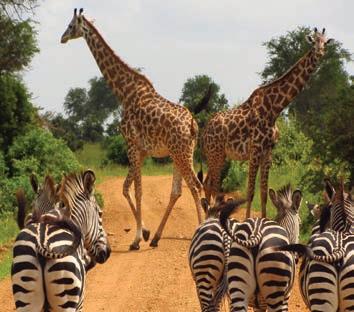

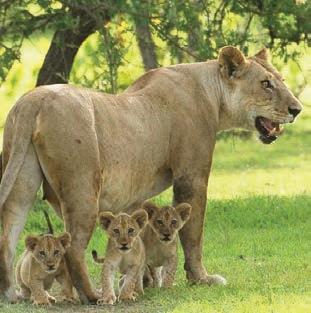

>ocated in southͲeast Tannjania in a remote and liƩleͲvisited part of the country, at an unbelievable ϱϬ,ϬϬϬ sƋ km, Eyerere EaƟonal Park, together with ^elous forms the combinaƟon of Park and 'ame Zeserve. The Zeserve covers more than ϱй of Tannjania’s total land area, and is three Ɵmes larger than the ^erengeƟ. Although slightly oī the beaten track of the more wellͲworn safari circuits, a visit to Eyerere EaƟonal Park, together with ^elous oīers unforgeƩable game viewing in almost completely isolated surroundings.
GETTING THERE
Visitors have two choices for their mode of transportation. ROAD - One would be undertaking a road safari from Dar-es-Salaam, where the normal circuit tour would include a visit to Mikumi National Park, leading to Ruaha National Park, and heading out to Nyerere National Park, together with Selous by using the Morogoro access road, which leads to the far leŌ end of the Nyerere National Park Ex Selous, and entering the Matambwe Gate. AIR CHARTER – The second way one can get to the Nyerere National Park, together with Selous is by plane ;Coastal Aviation, Flight Link, Safari Air Link Θ Auric AirͿ with departures from Arusha, anzibar and Dar-esSalaam, landing at the various accommodation or public access airstrips. This is the quickest but also the more expensive way to get to the game reserve.
ACTIVITIES
zou won͛t be disappointed to have a few days safari in the Nyerere National Park, together with Selous. The conservation area allows walking and boating safaris, unlike other national parks, and guiding standards are high. Many camps will arrange fantastic fly-camping nights in the bush, bookable in advance. It also facilitates encounters with rare and endangered wild dogs, boat game viewing, fishing, hiking safaris, and bird-walking safaris in addition to standard wildlife safaris.
WHEN TO GO
Dry Season: The dry season sets in during :une to November and is the best time for game viewing along the rivers. Elephants come out of the bush at that time and predators are more commonly seen. Rainy Season: :anuary to April is wonderful for birdlife and lush scenery but many roads become impassable aŌer heavy rains. December to February is still good for game viewing but can be rather hot and humid. The safari lodges are usually closed from March to May.
WHERE TO STAY
There are both lodges and tented camps inside the Nyerere National Park, together with Selous. There are also several campsites in and around the game such as
RUFIJI RIVER CAMP: is located on the banks of the Rufiji River. The camp has 14 tents including 11 classic individual tents pitched underneath thatched roofs with private verandas
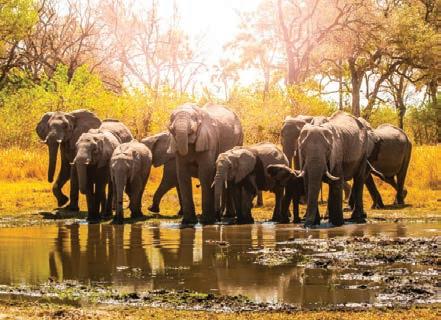


facing the river, and 3 suites each with 2 large tents on a shared platform with a private plunge pool ideal for families and friends. In the main lodge area, there is a friendly bar with stunning sunset views over the river, campfire pit and an open-sided dining room with plentiful food. There is also a shaded swimming pool to enjoy between game drives, walking and boating safaris.
LAKE MANZE TENTED CAMP:
The camp consists of 12 tents spread out in the shade of natural vegetation, along the shores of the lake. The tents are ͞Meru style͟ canvas with double zip locking with mesh windows, spacious and furnished with twin or double beds. Dining can be in the thatched dining area during the day and under stars outside at night, with a campfire.
ROHO YA SELOUS: The eighttent camp is simple and stylish, with evening-breeze cooling systems above the beds making even the hottest nights more comfortable. During the day, cool off in the pool or spot wildlife making its way to the water from an armchair in our shaded dining tent or lounge area. Out and about, explore by vehicle, on foot or even in

a boat, with fishing excursions available.
Others are Beho Beho Camp, Selous Luxury Camp, Sable Mountain Lodge, Sand Rivers Selous, Selous Impala Camp, Selous Mbega Camp and Selous Safari Camp.
Nyerere National Park, together with Selous are one of the last untouched gems of the nation͛s parks, it offers the visitor a unique opportunity to see Africa the way the early explorers found it - pristine, alive with game, empty of tourists and utterly awe inspiring.
Picture Courtesy of Moiz Hussein & TTB

